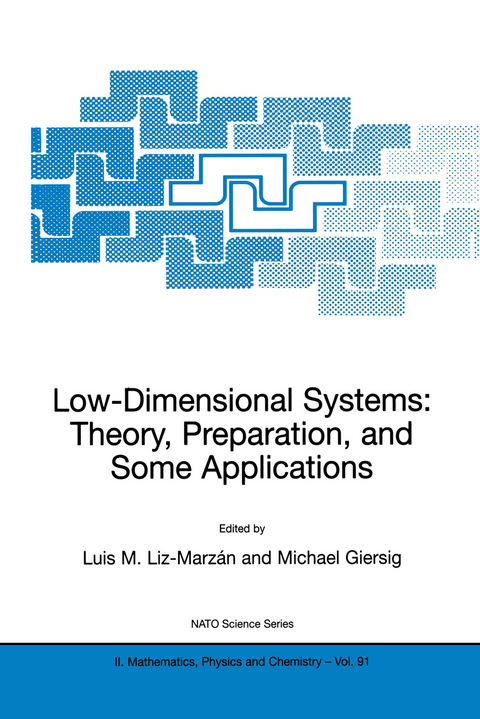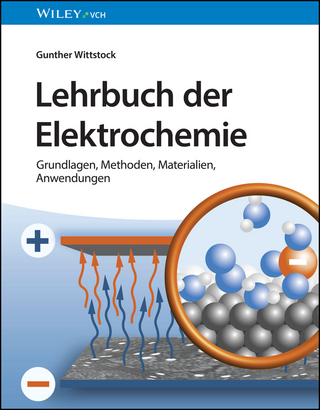
Low-Dimensional Systems: Theory, Preparation, and Some Applications
Springer-Verlag New York Inc.
978-1-4020-1168-9 (ISBN)
This volume contains papers presented at the NATO Advanced Research Workshop (ARW) Dynamic Interactions in Quantum Dot Systems held at Hotel Atrium in Puszczykowo, near Poznan, Poland, May 16-19,2002. The term low-dimensional systems, which is used in the title of this volume, refers to those systems which contain at least one dimension that is intermediate between those characteristic ofatoms/molecules and those ofthe bulk material. Depending on how many dimensions lay within this range, we generally speak of quantum wells, quantum wires, and quantum dots. As such an intermediate state, some properties of low-dimensional systems are very different to those of their molecular and bulk counterparts. These properties generally include optical, electronic, and magnetic properties, and all these are partially covered in this book. The main goal of the workshop was to discuss the actual state of the art in the broad area ofnanotechnology. The initial focus was on the innovative synthesis of nanomaterials and their properties such as: quantum size effects, superparamagnetism, or field emission. These topics lead us into the various field based interactions including plasmon- magnetic spin- and exciton coupling. The newer, more sophisticated methods for characterization of nanomaterials were discussed, as well as the methods for possible industrial applications. In general, chemists and physicists, as well as experts on both theory and experiments on nanosized regime structures were brought together, to discuss the general phenomena underlying their fields ofinterest from different points ofview.
Dr. Luis Liz-Marzán is currently a Professor of Physical Chemistry at the University of Vigo (Spain). He is an experimental physical chemist with research expertise in the areas of synthetic colloid science and nanoassembly. His current research activities include the synthesis of core-shell nanoparticles of various nature, assembly of nanoparticles in 2D and 3D, photonic materials, and tailored magnetic thin films. He has recently organized workshops on "Nanoparticle-Based Nanostructures" and "Dynamic Interactions in Quantum-Dot Systems", and was guest editor of a special issue of the MRS Bulletin on "New Aspects in Nanocrystal Research" (December, 2001). He has published over 50 research papers and review articles on several aspects of nanoscience.
Theory.- Theory of Atomic Clusters. Metallic Clusters Deposited on Surfaces.- Sub-Wetting Layer Continuum States in Quantum Dot Samples.- Plasmons in Carbon Nanotubes.- Molecular Dynamics Simulations of Nanotube Growth.- Density of States of Amorphous Carbon.- Preparation And Characterization.- Anisotropic Silver Nanoparticles: Synthesis and Optical Properties.- Mechanical Properties of Small Metal Spheres and Rods.- Polymer Controlled Crystallization: Shape and Size Control of Advanced Inorganic Nanostructured Materials-1D, 2D Nanocrystals and More Complex Superstructures.- Nanocrystalline ErIII/SiIV@ZnO Multilayers: A Detailed Optical and Structural Study.- Laser Photoetching in Nanoparticles Preparation and Study of Their Physical Properties.- Growth and Characterizations of Well-Aligned Carbon Nanotubes.- Encapsulation of Co Nanoclusters in a-C:H.- Synthesis of Colloidal Magnetic Nanoparticles. Properties and Applications.- Nanosphere Lithography — Fabrication of Various Periodic Magnetic Particle Arrays Using Versatile Nanosphere Masks.- Magnetism of Monodisperse Core/Shell Particles.- Circular Magnetic Elements: Ground States, Reversal and Dipolar Interactions.- Submicron Size Particles of Magnetic Films and Multilayers.- Relaxation of Hot Electrons in Solids of Reduced Dimensions.- Analytical TEM Characterisation of Catalytic Materials.- Scanning Probe Microscopy Characterization of Cluster Systems.- Applications.- Quantum Mechanical Design of Elements of Molecular Quantum Computers Based on Biliverdin and Aza-fullerene Compounds.- Quantum Interference and Correlations in Electronic Transport Through Nanodevices.- On Construction of Molecular Memory Based on Fullerene Adducts.- Electrochemical Application of Carbon Nanotubes.- Author index.
| Reihe/Serie | NATO Science Series II: Mathematics, Physics and Chemistry ; 91 |
|---|---|
| Zusatzinfo | XIX, 322 p. |
| Verlagsort | New York, NY |
| Sprache | englisch |
| Maße | 155 x 235 mm |
| Themenwelt | Naturwissenschaften ► Chemie ► Physikalische Chemie |
| Technik ► Elektrotechnik / Energietechnik | |
| Technik ► Maschinenbau | |
| ISBN-10 | 1-4020-1168-7 / 1402011687 |
| ISBN-13 | 978-1-4020-1168-9 / 9781402011689 |
| Zustand | Neuware |
| Haben Sie eine Frage zum Produkt? |
aus dem Bereich


